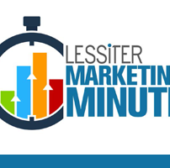
By Kayla Waukau
Marketing Coordinator, Lessiter Media
kwaukau@lessitermedia.com
As marketing professionals, we can get so wrapped up in the fun and excitement of developing creative campaigns like flash sales, holiday offers, and BOGO deals, that sometimes we don’t track and analyze the campaign’s overall effectiveness. If we aren’t collecting accurate data and analyzing the detailed results of our promotions, we’re not going to be able to easily determine if the sale was successful and worth repeating, or if it should be kicked to the curb. Here’s an example…
Back in 2016, when Black Friday was still becoming synonymous with the holiday season, our brand manager Joanne had what at the time we thought was an outlandish idea — to run a Black Friday registration sale for our in-person events. Despite conflicting opinions on whether our predominately older, rural male audiences would respond to such a sale, we gave it a test run and much to our surprise, the Black Friday sale generated more than $15,000 in revenue and immediately gave us a head start in our registration pacing.
With many different Black Friday promotions deployed across multiple channels, Joanne leveraged tracking tools and detailed reporting to develop an overall picture of the campaign’s performance to provide valuable insight to implement into the next year’s campaign. As a result, we have been able to build upon 10 consecutive years of Black Friday sales that have generated $500,000+ in total revenue. And these results would never have been achievable if we had been “promoting in the dark,” without the benefit of accurate and directional data.
If you too want to put some data science behind your marketing promotion, check out 3 easy tools in the infographic below to help you analyze your marketing campaigns.
![]()


